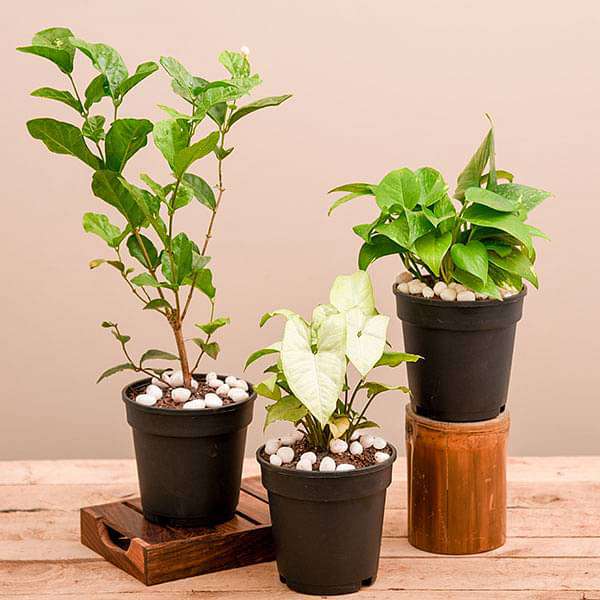Allamanda blanchetii (al-uh-MAN-da blan-CHET-ee-eye) is a flowering perennial member of the Apocynaceae family of plants hailing from Brazil in South America. You may hear this plant referred to as:
- Allamanda Violacea
- Purple Allamanda
- Cherry Allamanda
- Violet Allamanda
Allamanda Blanchetti Care
Size & Growth
This shrub can grow to be up to ten feet tall with an equal spread. Leaves are slightly downy, glossy, and a bright shade of green.
Flowering & Fragrance
Allamanda blooms on new growth. Purple Allamanda buds are a deep brownish shade of burgundy, and the blooms are an arresting shade of purplish-rose.
The large, showy, trumpet-shaped flowers can be up to three inches wide and appear throughout the plants’ long growing season.
In temperate settings, Allamanda blooms throughout the summer and into the autumn months. In a tropical setting, the plant will bloom all year round.
Light & Temperature
Allamanda Violacea does well in light shade to full direct sunlight.
NOTE: The Allamanda in the image above in growing in direct sunlight all day in southwest Florida and has been for years.
The plant is winter hardy in USDA hardiness zones 9b – 11 and needs warm temperatures ranging from 65° – 80° degrees Fahrenheit.
Temperatures should not fall below 59° degrees Fahrenheit for extended periods. Yet, Cherry Allamanda can survive brief drops of temperature down to 32° degrees Fahrenheit.
This plant grows well in temperate climates, such as in southern Florida, southern Texas, and along the coastline of southern California.
It will not grow or bloom well if subjected to freezing temperatures. If you live in an area with cold winters, you should bring it indoors and keep it as a container plant during winter.
Watering & Feeding
Water sufficiently to keep the soil moist but not wet at all times. Insufficient watering will cause the plant to drop its leaves. Reduce watering during the winter months.
Fertilize two times a month during the growing season using a water-soluble fertilizer intended for blooming plants.
Soil Type & Transplanting
Plant your Allamanda in well-draining, fertile soil that is rich in organic matter. Too little organic matter in the soil will cause leaves to turn yellow.
Mulch around the shrub to retain moisture and keep the roots cool.
Grooming & Maintenance
You can allow Cherry Allamanda to ramble and climb as a vining plant, or keep it closely trimmed to grow in a bush form. Encourage a bushier plant and more flowers with pruning in late winter or early spring.
Deadhead flowers and remove seed pods to encourage blooming and growth throughout the growing season. Perform a thorough pruning late in the wintertime to promote abundant new growth and blooms.
How To Propagate Allamanda Blanchetii
You can grow Allamanda from seed. Start from cuttings or use the air-layering method.
Allamanda Blanchetii Pest Or Disease Problems
If properly situated and cared for, Allamanda is a mostly trouble-free plant. But, mealybugs, red spider mites, scales and whiteflies do attack.
Yellowing leaves – chlorosis – is often caused by a manganese deficiency.
Wilting Leaves and Dropping Flower – This is often an issue with potted plants due to the lack of water especially during warm, dry times of the year. Check the soil to ensure the plant is receiving enough water.
Damaged leaves are often the result of Plumeria Caterpillars – Pseudosphinx tetrio species, aka frangipani hornworm or rasta caterpillar. The caterpillar feeds and pupates on the leaves of Allamanda shrubs and other Apocynaceae plants.
Is The Allamanda Plant Toxic Or Poisonous To People or Pets?
Allamanda is a toxic plant, and its latex sap can cause contact dermatitis. Keep the plant well away from kids and pets, and be sure to wash up after handling and working with it.
Is Allamanda Considered Invasive?
Allamanda Violacea is not invasive in any part of the United States or Canada.
Suggested Allamanda Blanchetii Uses
This pretty, versatile tropical plant can do well climbing a trellis, scrambling over an arbor, or kept as a potted plant. It is a welcome addition to pollinator and butterfly gardens.








Reviews
There are no reviews yet.